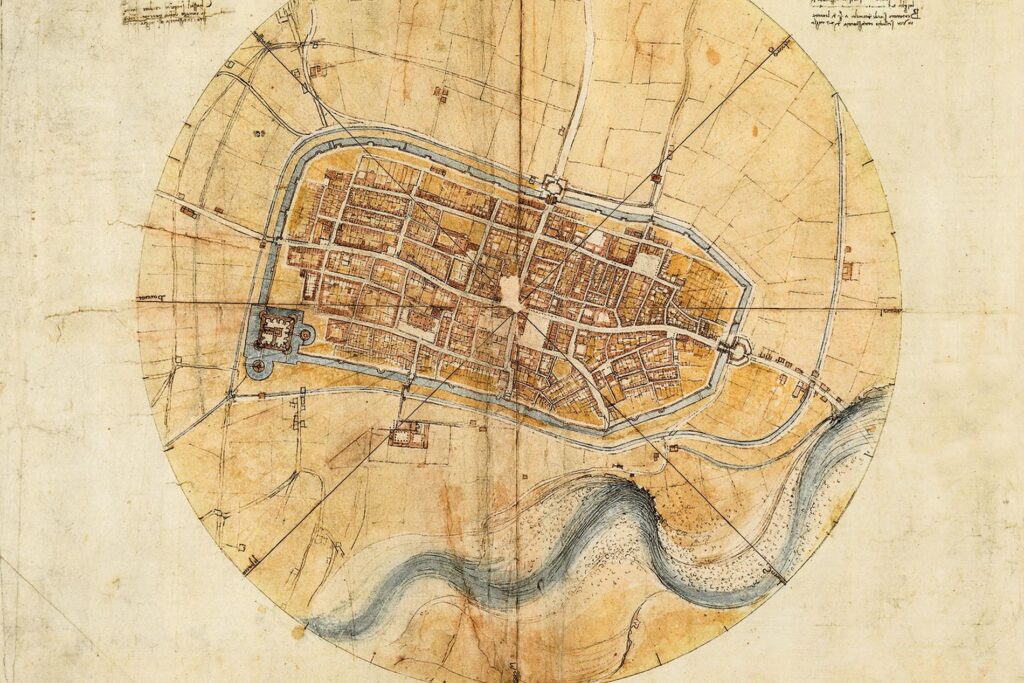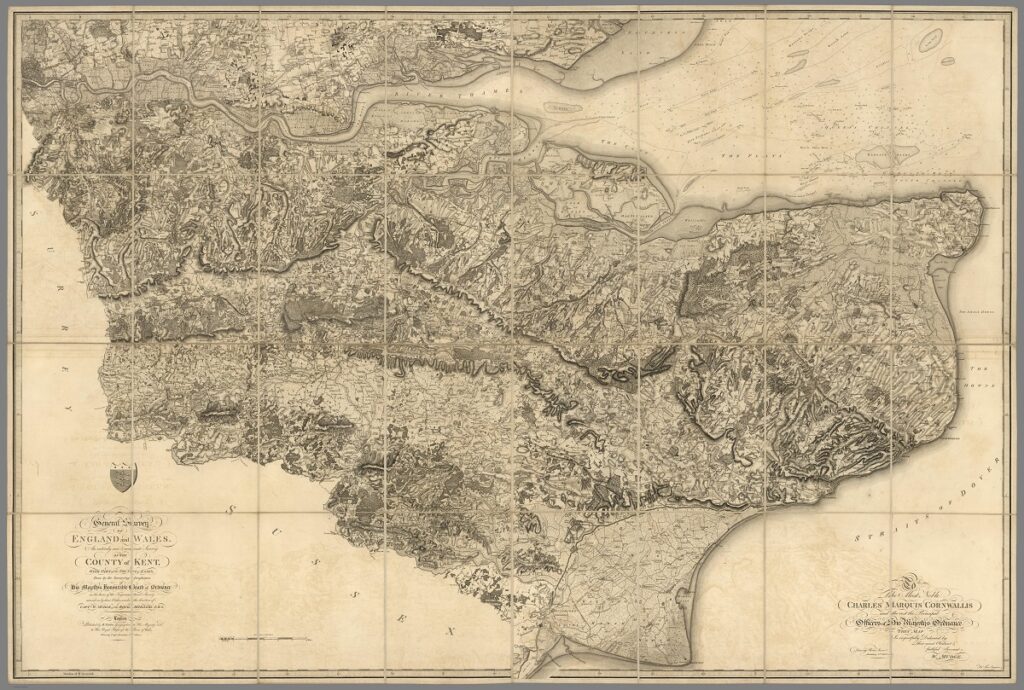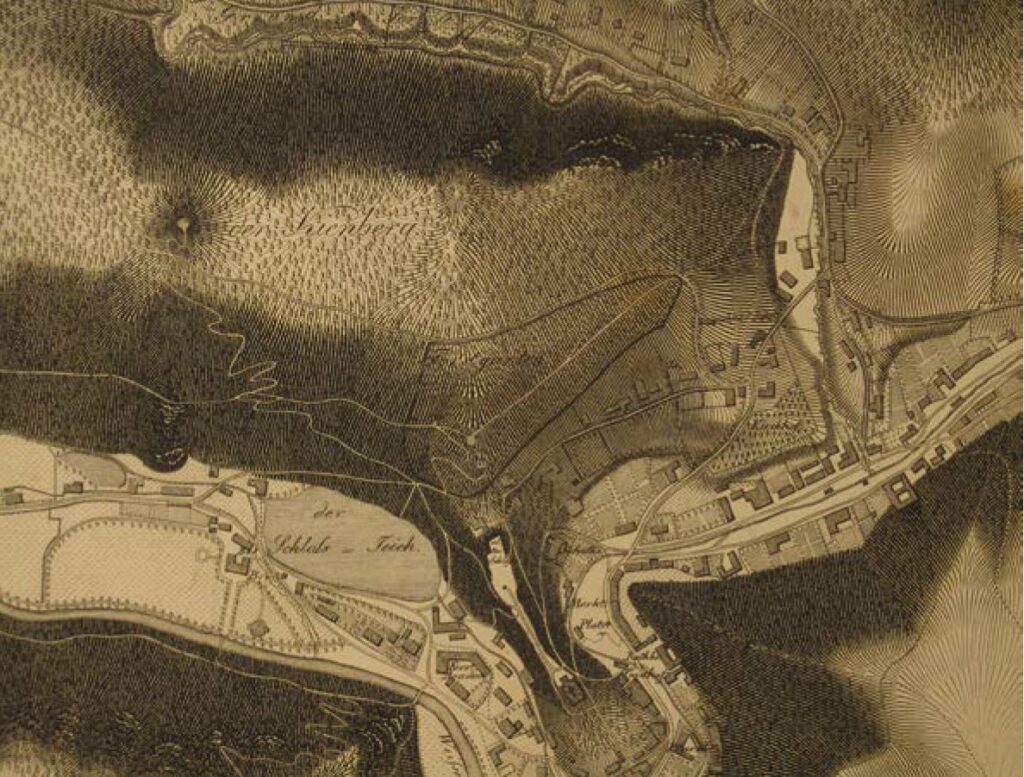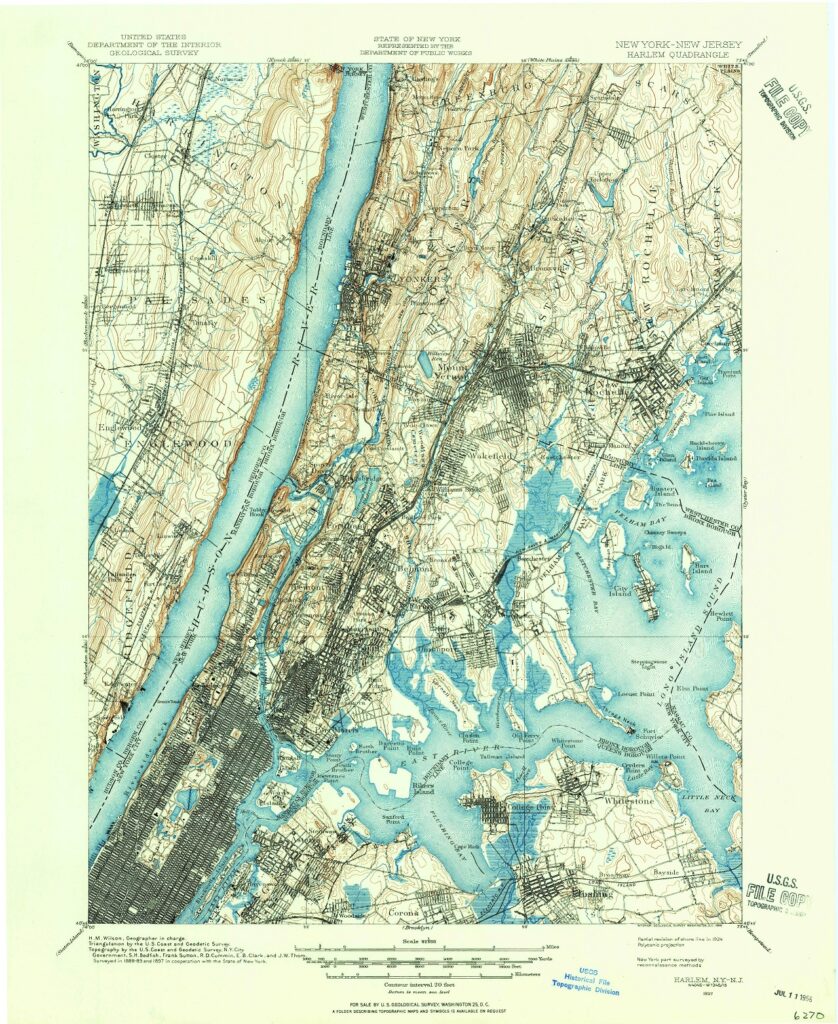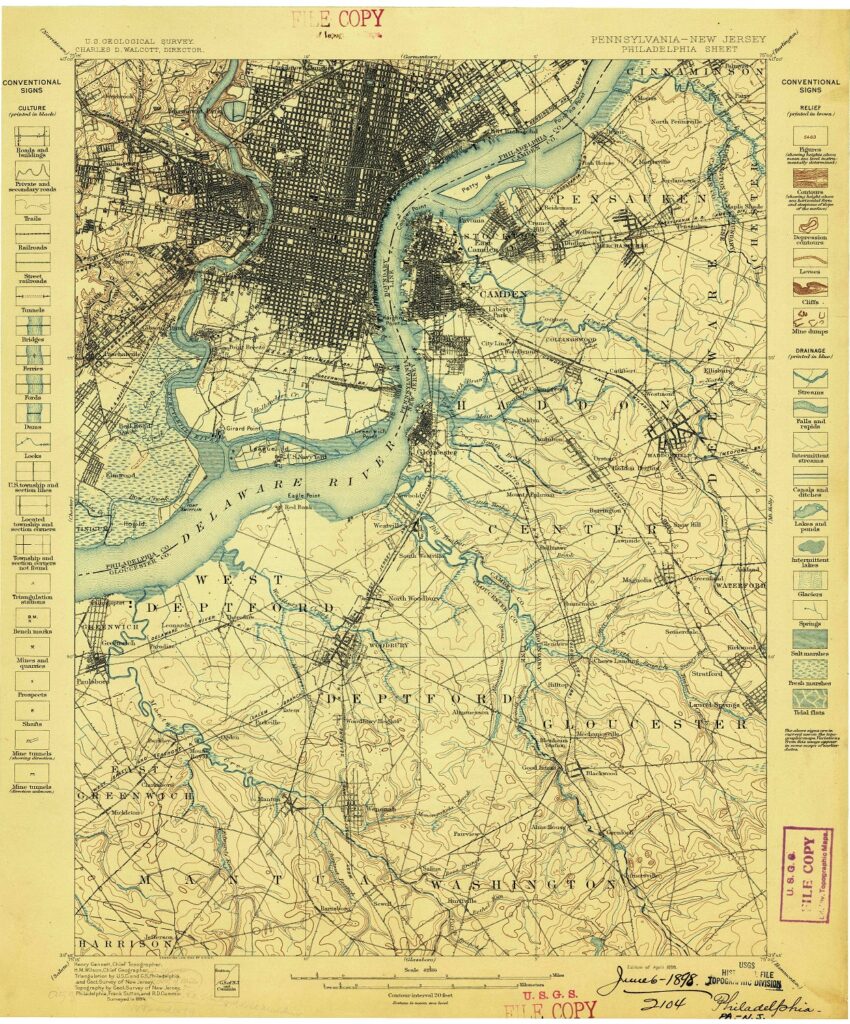Contour Maps
What is a Contour Map?
We build 2D and 3D Contour Maps
Table of Contents
Contour Maps
Prepare to embark on a journey of discovery with the incredible contour maps, sometimes called topographic maps. These topographic maps are an absolute must-have for hikers, surveyors, geologists, and anyone with an unquenchable thirst for exploring the great outdoors. By providing an accurate representation of the land’s three-dimensional shape, contour maps are the ultimate tool for studying the landscape. They reveal every nook and cranny of the terrain, from the towering peaks to the deepest valleys. With a contour map in hand, you’re ready to conquer any trail and unlock the secrets of the natural world!
Let’s talk about the real heroes of contour maps: the contour lines! These mighty lines are the backbone of any contour map, connecting points on the map that are at the same height above sea level. With every contour line, you get a clearer picture of the elevation of the land and how steep the terrain is. And that’s not all – the contour interval, or the distance between each contour line, is like a secret code that holds the key to unlocking the mysteries of the landscape. Every contour line is a story waiting to be told, and every contour map is a treasure map that leads to adventure!
But the features of a contour map go far beyond the contour lines. Another essential element is the scale, which is the ratio between the distance on the map and the corresponding distance on the ground. The scale allows you to determine the actual distance between points on the map and plan your journey accordingly. The map’s legend is also a crucial component, as it provides key information about the map’s symbols, colors, and other features. This information can include the contour interval, the scale, and the date of the map.
Contour maps can be used to determine the height of a mountain or hill, the depth of a valley, or the steepness of a slope. The closer the contour lines are to each other, the steeper the terrain is. For example, if the contour lines on a map are very close together, it indicates a steep slope, while if they are far apart, it indicates a gentle slope.
With a wide range of symbols and colors, contour maps can have many features representing unique landscapes. For example, a blue color may indicate a water feature, such as a lake or river, while a green color may indicate a forested area. Symbols may include buildings, roads, and other man-made features, as well as natural features such as cliffs, ridges, and valleys. Together, these symbols and colors create a rich and detailed map that is a joy to explore.
Contour maps can also reveal important geological features, such as ridges, valleys, and cliffs. By examining the patterns of the contour lines, you can gain a better understanding of how the landscape was formed and how it has evolved over time. For example, you might notice that the contour lines on a map are arranged in a series of concentric circles. This pattern is a telltale sign of a volcanic crater.
Contour maps are also valuable tools for scientists and researchers. They can be used to study the effects of erosion, land use, and climate change on the landscape. By comparing contour maps from different points in time, researchers can gain a better understanding of how the land has changed over the years.
In addition to their practical uses, contour maps can also be works of art. Some maps are so beautifully designed that they are considered to be pieces of art in their own right. For example, the United States Geological Survey produces a series of maps called “The National Geographic Trails Illustrated Map Series,” which are known for their stunning cartography. The USGS also has a large inventory of current and historical maps, over 400,000 maps, each considered a work of art.
Sample 3D Contour Maps of Geologic Salt Blocks-Domes
Contour maps have a wide range of uses and benefits. Here are some of the main ones:
- Navigation: Contour maps are essential for navigating in the outdoors, whether you’re hiking, camping, or mountaineering. They provide a detailed picture of the terrain, including the elevation, slope, and natural features, making it easy to plan your route and avoid hazards.
- Engineering: Contour maps are also used extensively in engineering projects, such as building roads, bridges, and dams. They provide crucial information about the land, such as the elevation and slope, which is essential for designing structures that are safe and functional.
- Environmental studies: Contour maps are used by environmental scientists to study the natural environment, including vegetation, geology, and hydrology. They provide valuable information about the terrain, which is essential for understanding and managing natural resources.
- Military planning: Contour maps are used extensively by the military for planning operations, as they provide detailed information about the terrain and its features. They are also used for navigation and reconnaissance.
- Scientific research: Contour maps are used by scientists in a variety of fields, including geology, biology, and archaeology. They provide detailed information about the land, which is essential for studying the natural environment and its history.
Sample USGS Current and Historical Topographic Maps
The benefits of contour maps are numerous. Here are some of the key ones:
- Accurate representation of the land: Contour maps provide an accurate representation of the land, including its elevation, slope, and natural features. This information is essential for a wide range of activities, from navigation to scientific research.
- Flexibility: Contour maps can be used at different scales, from large-scale maps that show individual buildings to small-scale maps that cover entire countries. This makes them useful for a wide range of applications, from planning a back-country hike or design new roads.
- Easy to read: Contour maps are designed to be easy to read and understand, with clear symbols and labeling. This makes them accessible to a wide range of users, from outdoor enthusiasts to scientists and engineers.
- Historical information: Contour maps provide a record of the land and its features over time. This information can be used to study changes in the environment, such as erosion, volcanic activity, and the distribution of plant and animal species.
Overall, the features of a contour map are what make it such a valuable tool for exploring the landscape. From the contour lines that reveal the land’s three-dimensional shape to the scale, legend, symbols, and colors that provide crucial information about the terrain, a contour map is a gateway to adventure and discovery. So grab your map and get ready to explore the world like never before!
Our high-quality maps and models are on display at museums, national parks, university campuses, sports facilities, hospitals, and research organizations worldwide. One of our more recent raised relief projects was of the Great Smoky Mountains National Park and the surrounding area. This large raised relief map covered over 1.2 million acres in a 91″ x 56″ frame.
We meld top-of-the-line technologies with professional cartography resources to create stunning raised relief terrain maps and models. Our expertise in 3D printing enables us to allow more markets to benefit from purchasing durable, portable, and affordable models.
Gallery of eCommerce 3D USGS Historical Topographic Maps and 2D Canvas Prints
Shop WhiteClouds 3D USGS Topographical Maps with 65,240 three-dimensional maps to choose from. There are also 361,902 3D USGS Historical Topographical Maps to choose from. These maps are not flat. They are three-dimensional, with the height being determined by Digital Elevation Model (DEM) data. These 3D maps are built by combining satellite imagery data from the USGS and DEM data. Make a statement with these beautiful 3D map images from every part of the United States.
Shop WhiteClouds 2D USGS Topographical Canvas Print Maps with 427,142 maps to choose from. These canvas print maps have both current and historical USGS topographic maps (from 1882 to present). There are also satellite and terrain canvas print maps that use the USGS coordinates.
Gallery of Custom 3D Map Projects
How 3D Contour Maps are Made
There are several techniques used to create contour maps, and the process can vary depending on the scale and complexity of the map. However, the basic steps involved in making a contour map are as follows:
- Create a base map. The first step in making a contour map is to create a base map of the area. This can be done using imagery from a standard two-dimensional map, aerial photographs, satellite images, or WhiteClouds can do it for you.
- Determine the design style of the map. There are over 40 styles to choose from. Popular ones include satellite, terrain, topography, raised relief, and satellite hybrid.
- Add any special design features not included in the source map, such as special features, landmarks, legends, roads, cities, symbols, etc.
- Add elevation data. The next step is to add elevation data to the map. This can be done using a variety of techniques, such as contour lines, shading, or digital elevation models (DEMs).
- Print the Map Overlay. Latex vinyl materials are used for the map details and colors.
- Create the 3D physical map. Once the elevation data has been added to the map, a physical 3D structure is created that replicates the topography of the area. This can be done using 3D printed plastic or thermoformed molding/casting. Either approach is combined with the Vinyl overlay.
- Finish the map. This is where any excess materials are cutaway. Any special sealers, matte finishes, hardeners, or UV protection is applied. Wood, metal or plastic bases are built and border flocking may be applied.
Features & Benefits of Contour Maps
- Remarkably Strong: You can drive a 1-ton truck over our contour maps.
- Precision: We print our contour maps to scale as accurately as are the original files and images.
- Excitement: It is much easier to get excited about 3D views of your ski runs or trails than flat printed maps.
- Stain and Water Resistance: Spills are easy to wipe up.
- Communication: Contour maps are simple to understand with a quick glance.
- Affordability: Our 3D technologies allow you to order custom 3D maps for a reasonable price.
- Testability: 3D technologies are affordable enough to test designs, such as several versions of planned work.
- Consistency: Using modern print and casting technologies, you can easily recreate identical 3D maps.
- Portability: We use lighter materials than what was available in the past, making our contour maps easy to transport.
Videos of 3D Maps
Map Design Styles of Contour Maps
Many design styles, or base maps, serve as a starting point for your contour map. We source and create our base maps using the same digital tools that expert cartographers use to create maps. Once you have selected your base map, everything else is fully customizable. We can layer informational text (such as landmarks or other points of interest) and even change the colors to suit your preferences.
Complex layers can be added such as streams and lakes, terrain, roads, and even more detail like political boundaries, religious, and other population-based demographics. Multiple layers can also be added to the same contour map. For example, community developers and city planners can benefit from a 3D map with layers that include parcel lines, existing building footprints, and utility lines. Take a look at the map style categories below for inspiration.
Technology and Materials Used in Contour Maps
- With 3D printing technology, you are not limited to straight lines and boxes. The curves and cliffs are captured accurately and beautifully in astonishing detail.
- Your vision of the final 3D map determines which materials we will choose to produce the best results. We help you to determine the materials that best suit your project.
- We use fabrication technologies such as 3D printing, CNC cutting, and molding/casting.
- Contour maps show incredible detail.
- Our maps are printed in full color (with over 17 million variations of color) for awe-inspiring presentations and displays. No painting required!
- Typically, we use a special process for finishing the sides of the raised relief maps in a suede-like material, similar to the finish of a jewelry box.
- Our in-house paint booth gives us flexibility in different types and grades of paint and finishing capabilities; we can provide UV-resistant coatings to protect the coloration of your 3M map for many years.
- We also offer customized additions to our 3D maps and models. Our in-house carpentry shop will build elegant bases, tables, or cabinetry to display any map you choose. Worried about dust? We can customize a case to protect your display as well. Our skilled artisans can hand-paint details to make your map a true work of art.
Pricing of Custom Contour Maps
The price of 3D maps and models are generally based on your size requirements, specific design needs, and the amount of work it will take to produce. Each map is custom-built and charged for accordingly. The best way to determine cost is to email us, call us at 385-206-8700, or fill out the form below and let us bid on your project.
Get a Free Price Estimate for a Custom Contour Map

Select any that apply
Custom Fabrication Workflow
Common Questions & Answers
- What is the largest map you can fabricate? There is no limit to the size of a map we can build. There are practical limits that will impact shipping and installation, but we work closely with our customers on these special requirements.
- What type of 3D maps can you fabricate? All types. Satellite Maps, Terrain Maps, Topographical Maps, Raised Relief Maps, USGS Maps, Contour Maps, and many more.
- Can you fabricate with different technologies and materials? Yes. Our most common fabrication technology is 3D Printing, but we can also build 3D Maps with CNC Cutting, 3D Foam, Molding/Casting, Thermoforming, and Sculpting.
- What materials can you 3D print in? We match the correct material and fabrication process to your requirements in terms of presentation, size, and transportability. We can 3D print in PLA, FDM, Full-Color Sandstone, UV-cured resin, plastic, rubber-like, acrylic, and nylon – as well as combining multiple technologies.
- Can you sign a Non-disclosure Agreement that you supply? Yes.
- How long will it take to create my map? That depends on the design and size of the map. A more complex or detailed map will take longer than a simple map, we can’t really say exactly how long it will take until we have the chance to understand what type of map you want fabricated. Generally, smaller standard maps can be a couple of weeks and large museum exhibition maps can be 6 months.
- What do you need from me to start the map fabrication? Boundaries are a good place to start. Determining map styles, sizes, height (may be exaggerated), and cabinetry needs are all part of the process. Special design features can also be added.
- What is a contour map? A contour map is a type of map that represents the three-dimensional shape and elevation of a terrain or land surface using contour lines. Contour lines are curved lines that connect points of equal elevation above or below a reference plane, usually sea level. The lines help to illustrate the shape and slope of the land, with steeper slopes indicated by closely spaced contour lines, and flatter areas indicated by widely spaced contour lines. By following the contour lines on the map, it is possible to visualize the shape and relief of the terrain, and to determine the elevation of specific locations.
- How do I read a contour map? Reading a contour map can be straightforward once you understand the basic features of the map. Contour maps use contour lines to show the shape and elevation of the land surface. The lines connect points of equal elevation above or below a reference plane, usually sea level. Here are some steps to read a contour map:
Look for the contour interval: The contour interval is the difference in elevation between adjacent contour lines. It is typically printed in the legend of the map.
Identify the elevation of a point: To determine the elevation of a specific point on the map, locate the nearest contour line and determine the elevation associated with that line. For points between contour lines, estimate the elevation based on the interval between the lines.
Determine the slope: The spacing of the contour lines can give you an idea of the slope of the land. Closely spaced contour lines indicate a steep slope, while widely spaced lines indicate a gradual slope.
Visualize the terrain: By following the contour lines, you can visualize the shape and relief of the terrain. Ridge lines, valleys, and peaks can be identified by the pattern of the contour lines.
How do I draw a contour map? Drawing a contour map requires gathering elevation data from the terrain and plotting it accurately on a map. Here are the general steps involved in drawing a contour map:
Survey the area: Before drawing a contour map, you need to survey the area to gather data on the elevations of specific points on the land surface. This can be done using surveying tools like a total station or GPS receiver.
Choose the contour interval: Determine the contour interval based on the terrain and the purpose of the map. The contour interval is the difference in elevation between adjacent contour lines.
Plot the elevation points: Plot the surveyed elevation points on the map. Each point should be labeled with its elevation.
Connect the points with contour lines: Connect the plotted points of equal elevation using a smooth, curved line to create the contour lines. Contour lines should be accurately spaced according to the chosen contour interval.
Add symbols and labels: Include symbols and labels on the map to indicate important features like rivers, roads, buildings, and landmarks.
Check for accuracy: Review the contour map for accuracy by comparing it to the original survey data and checking for consistent spacing of the contour lines.
- What are the contour lines on a contour map? Contour lines are the primary feature of a contour map. They are the curved lines that connect points of equal elevation on the surface of the land being mapped. Each contour line represents a specific elevation, and adjacent lines have a constant difference in elevation, known as the contour interval. Contour lines are labeled with their elevation, typically in feet or meters, and are numbered at regular intervals on the map. They may also be color-coded to make them easier to read and interpret. By reading the contour lines on a map, you can determine the shape and steepness of the terrain, the location of features like ridges, valleys, and hills, and the overall topography of the area being mapped. The closer together the contour lines, the steeper the terrain, while widely spaced contour lines indicate a gentler slope.
- How do I calculate gradient on a contour map? You can calculate the gradient on a contour map by determining the change in elevation between two points and dividing it by the distance between those points. The result is the gradient or the slope of the terrain. To calculate the gradient on a contour map, first, you need to identify two points on the map. You can use the contour lines to find these points, noting their elevations. Next, measure the horizontal distance between the two points on the map using a ruler or a compass. Then, subtract the lower elevation from the higher elevation to find the change in elevation between the two points. Finally, divide the change in elevation by the horizontal distance between the points to get the gradient or slope of the terrain. This value is often expressed as a percentage or as a ratio (rise over run), which represents the number of vertical units gained or lost over a certain horizontal distance.
- How do I find elevation on a contour map? To find the elevation on a contour map, you need to locate the contour lines on the map. Each contour line represents a specific elevation, and the distance between contour lines is constant, representing a specific interval or change in elevation. To find a specific elevation, look for the contour line that matches that elevation. If the elevation you’re looking for is not labeled on the map, you can estimate the elevation by using the contour interval. For example, if the contour interval is 10 meters, and the elevation of the closest contour line is 50 meters, you can estimate that the elevation you’re looking for is around 55 meters if the contour line above it is 60 meters.
- What is an interval on a contour map? An interval on a contour map refers to the constant difference in elevation between adjacent contour lines. The contour interval is usually stated in the map’s legend and depends on the scale and detail of the map. For example, a contour interval of 10 meters means that each contour line represents an elevation that is 10 meters higher or lower than the adjacent line. The interval is important in determining the steepness of the terrain. If the interval is small, it means the terrain is steep, while a larger interval indicates a gradual slope. It’s also essential in determining the accuracy of elevation measurements since the difference in elevation between contour lines may not always be consistent due to the complexity of the terrain. In general, a smaller contour interval indicates a more detailed and accurate map.
- How do you recognize a mountain on a contour map? Mountains on a contour map are characterized by several closely spaced contour lines forming concentric circles around a high point, with the circles getting smaller as the elevation increases towards the peak. These lines represent the changes in elevation and show the height and steepness of the terrain. The closer the contour lines, the steeper the slope, and the farther apart the lines, the gentler the slope. To recognize a mountain on a contour map, look for the cluster of concentric contour lines indicating a high elevation with steep terrain. The peak of the mountain is located at the center of the circles formed by the contour lines, which represents the highest elevation of the mountain. The contour lines extending from the peak will show the slope and shape of the mountain.
- What do lines on a contour map indicate? The lines on a contour map are known as contour lines and they indicate the elevation of the land at specific points. Each contour line represents a specific elevation, and adjacent lines have a constant difference in elevation, known as the contour interval. By reading the contour lines on a map, you can determine the shape and steepness of the terrain, the location of features like ridges, valleys, and hills, and the overall topography of the area being mapped. The closer together the contour lines, the steeper the terrain, while widely spaced contour lines indicate a gentler slope. Contour lines are labeled with their elevation, typically in feet or meters, and are numbered at regular intervals on the map. They may also be color-coded to make them easier to read and interpret.
- How is depression represented on a contour map? Depressions on a contour map are represented by closed contour lines with hachure marks on the inside. These hachure marks indicate that the area within the closed contour lines is lower in elevation than the surrounding areas. The hachure marks are drawn perpendicular to the contour lines and point towards the center of the depression. The length of the hachure marks represents the depth of the depression. The longer the hachure marks, the deeper the depression.
Depressions can take various forms, such as basins, valleys, or craters. They are important to identify on a contour map because they may affect the flow of water and the drainage patterns in the area.
- How is distance measured on a contour map? Distance can be measured on a contour map using the scale provided on the map. The scale will indicate the distance on the ground represented by a certain distance on the map, usually in units such as miles or kilometers. To measure distance using the map scale, first measure the distance on the map using a ruler or compass. Then, using the scale provided, determine the actual distance represented by that distance on the map. Alternatively, distance can be estimated by counting the number of contour lines between two points and multiplying by the contour interval to get an approximate elevation change. This elevation change can then be converted to a horizontal distance using the slope and the Pythagorean theorem. However, this method is less precise and should only be used as an estimation.
- What do lines on a contour map indicate? Lines on a contour map indicate changes in elevation. Specifically, contour lines represent imaginary lines on the map that connect points of equal elevation. Each contour line represents a specific elevation, with adjacent lines indicating a change in elevation. The closer together the contour lines are, the steeper the slope of the terrain, while farther apart lines indicate a more gradual slope. Contour lines can also show the shape of the terrain features, such as hills, valleys, and ridges. For example, concentric contour lines indicate hills or peaks, while contour lines that form a “V” shape with the point of the “V” pointing uphill indicate a valley or depression. By reading the contour lines on a map, one can gain a sense of the overall shape of the terrain and estimate the difficulty of hiking or traveling through the area.
- How does a contour map work? A contour map is a type of topographical map that uses contour lines to represent elevation and the shape of the terrain. The lines connect points of equal elevation, forming a pattern that represents the three-dimensional landscape in a two-dimensional format. By examining the pattern of contour lines, you can determine the shape of the terrain, including hills, valleys, and other features. The closer the contour lines are together, the steeper the slope of the terrain, and the farther apart they are, the flatter the area.
Do you have a question we didn’t answer? Don’t hesitate to contact us at 1-385-206-8700 or sales@whiteclouds.com.
Worldwide Delivery
WhiteClouds has delivered maps around the world.
History of Contour Maps
Contour maps have been used for centuries to represent the three-dimensional surface of the earth on a two-dimensional plane. The concept of contour lines, which represent the elevation of the land, can be traced back to the 16th century, when Leonardo da Vinci made drawings of the mountains in Italy using contour lines.
The first modern topographic map was created in 1789 by the French cartographer and engineer, Charles Joseph Minard. He created a map of the Pyrenees mountains that showed elevations using contour lines. In the early 19th century, the British Ordnance Survey began producing detailed topographic maps of the United Kingdom, which were used for military and civilian purposes.
In the mid-19th century, the Swiss cartographer Johann Georg Lehmann developed a system for representing relief on maps using shading and contour lines. This system was adopted by many cartographers around the world, and contour maps became a standard tool for representing topography.
During the 20th century, contour maps became increasingly important in fields such as geology, geography, and environmental science. With the advent of digital mapping technologies, it became possible to produce highly detailed and accurate contour maps using satellite imagery and other remote sensing techniques.
The United States Geological Survey (USGS) has been producing topographical maps for over a century. These maps have become an indispensable tool for scientists, geologists, land managers, urban planners, and adventurers alike, providing a detailed and accurate representation of the landscape.
The origins of USGS topographical maps can be traced back to the late 1800s. At the time, there was a growing need for accurate maps of the United States, particularly in the western territories, where new mines and settlements were being established. In response to this need, Congress established the USGS in 1879, with the mission to “classify the public lands and to examine the geological structure, mineral resources, and products of the national domain.”
Today, contour maps are used for a wide range of applications, from urban planning and resource management to outdoor recreation and scientific research. They remain an essential tool for understanding the topography of the earth’s surface and the distribution of natural resources and features.

